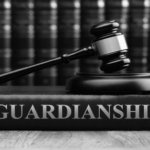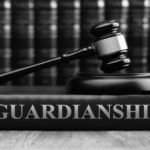There are instances that require urgent intervention to safeguard the well-being and interests of our family and friends who have become vulnerable individuals. Emergency guardianships in North Dakota serve as a vital mechanism to provide nearly immediate protection from imminent harm and exploitation. This article will explore the purpose and process of emergency guardianships in North Dakota. If you are interested, you can also read about guardianships and conservatorships in the following articles:
- What Happens If I Don’t Have a Health Care Directive
- The Battle Between a Power of Attorney and Guardianship! Which One Is Right For You?
- The Steps of a Guardianship
- Becoming A Certified Guardian Under Rule 59, Starting March 1, 2018
- I Have Been Appointed Guardian, Now What?
- How Can a Guardian Ad Litem Help Me With the Adult Guardianship Process
- Guardianship vs Conservatorship: What You Need and When
- The Rights of a Ward In A Guardianship
Emergency Guardianships: The Why
Emergency guardianships in North Dakota are allowed in critical situations where there is clear and immediate danger to a person or the person’s assets. They are designed to swiftly address these risks and provide temporary decision-making authority to a guardian who can act in the person’s best interests. Emergency guardianships in North Dakota generally are a means of last resort. Said differently, if there is another way to protect the person without the need for an emergency guardianship, that method should be explored as well (see the article comparing a guardianship to a power of attorney). While the necessity of emergency guardianship can vary, it is usually used when a person is a victim of an accident, is being abused or exploited, or is having serious medical concerns ranging from substance abuse issues to mental health concerns.
Emergency Guardianships: The How
To start the emergency guardianship process, a person will file what is called a petition with the court, requesting an emergency guardian be appointed. This petition will usually include sworn statements of fact or have a corresponding affidavit filed with it to show the facts leading up to the need for an emergency guardian.
Upon review of the petition and any other corresponding documents, the court will determine whether there is a clear and imminent risk to the person’s well-being and/or assets. If so, the court will grant a temporary guardianship. While outside the scope of this article, the court will also determine whether the emergency is so severe as to grant the guardianship temporarily without a hearing or notice to the person to be protected.
Upon the petition being filed, a guardian ad litem will be appointed. The guardian ad litem is an attorney appointed to act in the best interest of the protected person. This means the guardian ad litem will advocate for whatever they believe will best serve the person to be protected. Since the guardian ad litem is not the attorney for the protected person, the protected person can still hire their own attorney. For more information on guardian ad litems, read the article here. The guardian ad litem will interview and explain the emergency guardianship process to the person to be protected and will usually prepare a report for the court’s review.
Once the guardian ad litem has completed their interview and report, the court will hold a hearing on the emergency guardianship. The hearing is intended to give the petitioner (person asking that an emergency guardian be appointed) a chance to prove their allegations in the petition, to give the person to be protected an opportunity to speak and address the court, and to allow any other interested persons to address the court. At the end of this hearing, the court will decide whether an emergency continues to exist and whether an emergency guardianship remains appropriate.
Emergency Guardianships: The When
One question our office receives frequently is “at what point is the situation an emergency?” This is a great question and one that is often difficult to answer. A good guidepost to follow in answering this question is to determine at what point are the behaviors or actions that you’re concerned about going to be irreversible? If you are concerned a loved one is being abused or they were in a serious accident, the answer is probably immediately. If you are concerned a loved one is about to be exploited by a scam, the answer is probably more along the lines of trying to ascertain more information about the potential scam or transaction and then proceed with an emergency guardianship. The good news is that our office routinely works in guardianship cases, and we can help answer this question with you.
If you find yourself in a situation where you need assistance to help your family member or friend, give us a call. We can help you determine whether a guardianship is necessary or if we can accomplish the same goals by alternative means.
Contact SW&L
If you feel you have a loved one who may need a guardian or conservator, please contact us!










